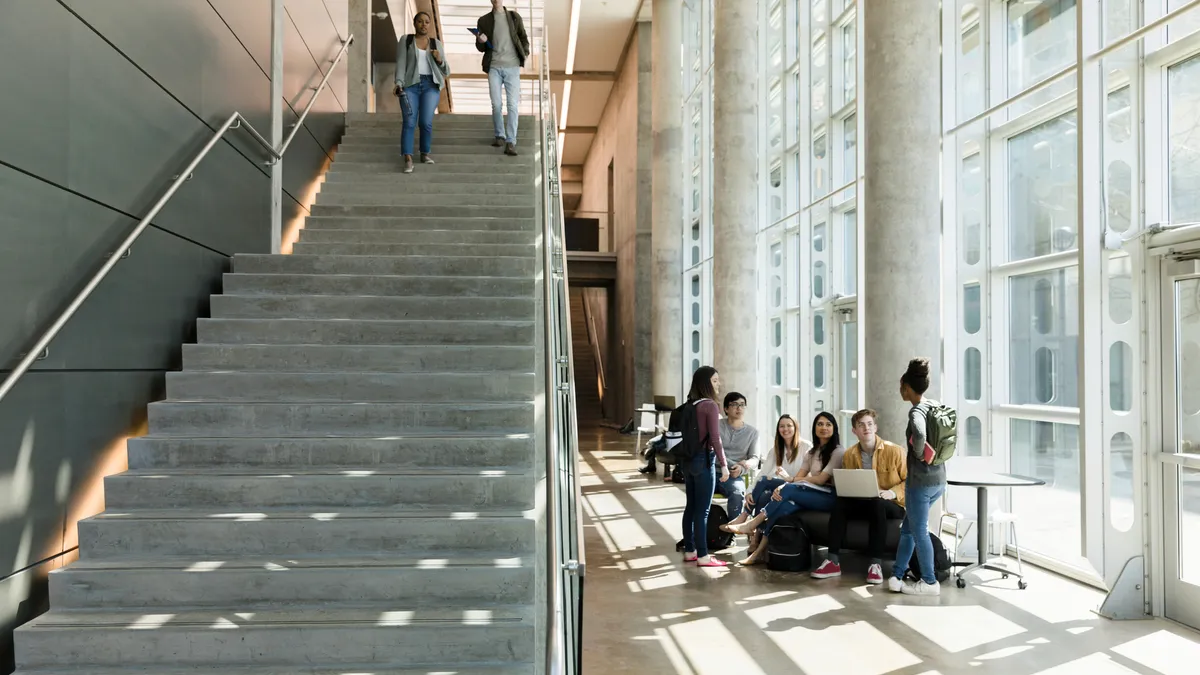Dive Brief:
- An influx of low-income and students of color has "almost exclusively" driven explosive growth in undergraduate enrollment at U.S. colleges and universities in the past two decades, an analysis from the Pew Research Center found.
- Of some 20 million undergraduate students in the 2015-16 academic year, 31% were in poverty and 47% were "nonwhite" (encompassing black, Hispanic, Asian or Pacific Islander, and multiple races), compared to 21% and 29%, respectively, in 1995-96. That indicates low-income students' access to college has improved, the authors contend.
- However, those changes are "not occurring uniformly," they write, noting community colleges and the least selective four-year colleges have seen the most growth in low-income and minority students.
Dive Insight:
Pew's analysis puts a spotlight on how the share of minority, adult and low-income students among the college-going population is growing. Yet their enrollment has been uneven across institutions.
For example, the portion of dependent students from low-income families that community colleges and for-profit institutions enroll has risen by 14 and 13 percentage points, respectively, from 1996 to 2016. Meanwhile, other types of institutions saw "more modest" gains with this group, with public and nonprofit, private four-year colleges both seeing increases of six percentage points or less during that time.
At the same time, more independent students are living in poverty, the authors note. In 2016, 42% of independent students were in poverty — about double the share of dependent students (20%). Very selective four-year institutions have seen the biggest increase, with more than half (52%) of their enrolled independent students living in poverty, compared to 32% two decades ago.
These trends highlight the need for colleges to offer wraparound supports, such as emergency grants, child care and food pantries.
And indeed, colleges are doing more to signal to low-income students that they can afford to attend. The University of California, Santa Barbara, for example, guarantees at least $120,000 for incoming low-income students over four years. And Michigan's St. Clair County Community College offers a scholarship to cover costs like unexpected car repairs and medical bills that can upend an education.
Racial minority enrollment has followed similar trends. Community colleges and four-year public colleges each saw a 19 percentage point increase to their nonwhite enrollment between 1996 and 2016. Private four-year nonprofits saw only a 10 percentage point increase over the same time period.
A similar report released last year from Georgetown University's Center on Education and the Workforce called out top public colleges for not equitably enrolling minority students, contending that the trend is creating "two separate and unequal" tracks for higher education.
Several proposals have emerged for how colleges can create more diverse student bodies. The College Board, for example, recently rolled out its "adversity score," which can help colleges gauge an applicant's socioeconomic status and the relative hardship or privilege they experienced. Early adopters have said the score has helped them admit more Latino and black students, according to College Board.







